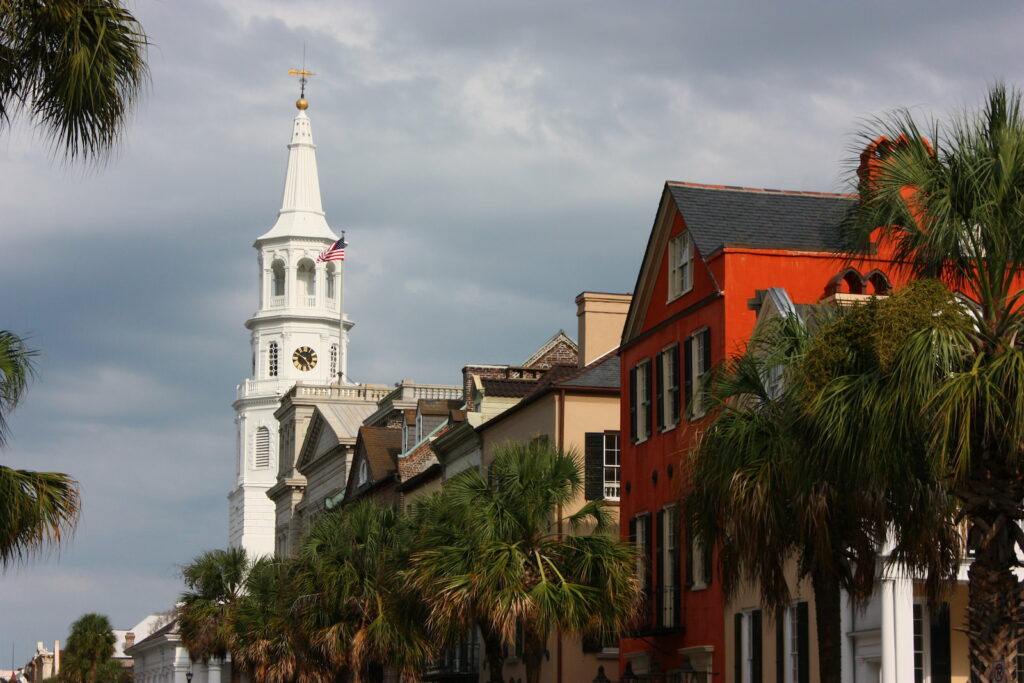How Charleston Became Known as “The Holy City”

Charleston, South Carolina, affectionately known as “The Holy City,” is a place of historical significance and cultural richness. The city’s unique nickname isn’t a random choice, but a testament to its deep-rooted religious history and the skyline dotted with church steeples.
But what’s the story behind this moniker? Let’s delve into the fascinating reasons why Charleston is called “The Holy City.”
The Birth of Religious Freedom
In the early days of America, Charleston stood out as a beacon of religious freedom. Founded in 1670, it was one of the few cities in the original thirteen colonies that offered a degree of religious freedom to its inhabitants.
This was a stark contrast to other colonies where specific religions were state-sanctioned. Charleston’s commitment to religious tolerance made it a haven for those seeking religious freedom, leading to a diverse array of faiths and denominations establishing their presence in the city.
A Skyline of Steeples
Charleston’s commitment to religious freedom isn’t just seen in its diverse faith communities – it’s literally etched into the city’s skyline. In Charleston, your gaze isn’t drawn to sleek, towering skyscrapers, but instead to the sky-piercing steeples of churches dotting the horizon.
This unique feature is a part of city zoning ordinances, and there’s a common belief, more tradition than fact, that no building can be taller than Charleston’s tallest church steeple (St. Matthew’s). In truth, the allowable heights for new constructions vary depending on the zoning designation of a particular parcel of property.
However, the city is mindful of preserving its historic skyline. The mass of a new building, even if technically lower than a neighboring church steeple, is carefully considered to prevent it from overwhelming the slender mass of historic steeples. And, of course, so that the building doesn’t topple over in the pluff mud.
This interplay of a building’s height, mass, and scale is a critical aspect of maintaining the city’s character, and it’s this nuanced approach to urban planning that has ensured the church steeples continue to reign supreme against the backdrop of clear blue skies.
A Melting Pot of Faiths
Today, Charleston, with its colorful and vibrant religious life, is home to an array of religious institutions, each with its own unique story and place in the city’s cultural fabric.
St. Philip’s Church, for instance, is not just a historic site but also a hub for community outreach with programs such as the ‘Meals Ministry,’ serving local communities in need. The church also hosts an annual Tea Room event, drawing crowds for its renowned okra soup and artisan crafts.
Similarly, the Kahal Kadosh Beth Elohim Synagogue, one of the oldest synagogues in the United States, is much more than a place of worship. Its remarkable history includes a pivotal role in the development of Reform Judaism. The synagogue also runs a variety of educational programs and cultural events that are open to the public, showcasing the Jewish community’s rich heritage and active presence in Charleston.
And it’s not just these institutions. Numerous other churches, mosques, temples, and spiritual centers throughout Charleston are deeply woven into the city’s social fabric, offering various services, community events, and volunteer opportunities. The Holy City indeed continues to live up to its name, offering a safe haven for a wide range of faiths and cultures.
Conclusion
Charleston’s rich history and ongoing commitment to religious diversity make it a fascinating destination for both locals and visitors alike, as there is always something new to learn.
Despite a few historic “anomalies” that break from the norm, such as The Peoples Building on Broad Street, Ft. Sumter House at the Battery, and the Francis Marion Hotel and Mendel Rivers Building on Meeting Street, the city continues to ensure these remain exceptions, not the rule.
So, the next time you gaze upon the Charleston skyline, remember not only the story of religious freedom and diversity but also the committed efforts to maintain the city’s unique identity that have earned it the title of “The Holy City.”